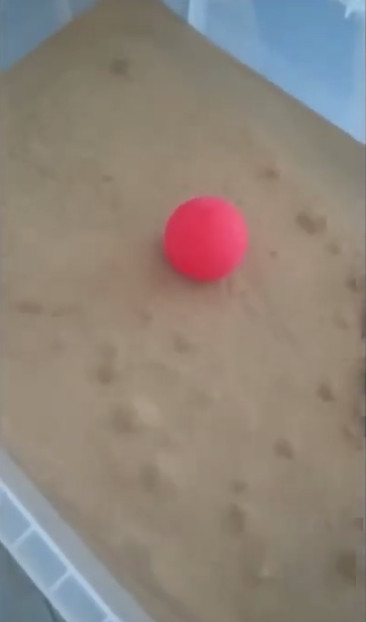Explaining the phenomenon of foaming sand like boiling water
Dry sand can be wavy, bubbling and flowing like water thanks to the liquefaction process.
The phenomenon of flowing and bubbling sand in some scientific experiments is actually due to pumping air into the sand , the Mother Nature Network reported on September 21.
This process is called liquefaction , explains Noel Kirkpatrick, editor at Mother Nature Network. Air is pumped into the sand tank from below. This amount of air separates the grains of sand, causing them to move more freely and flexibly, like particles in liquids. The result is wavy sand, bubbling and flowing like water.

Sand ripples, bubbles and flows like water.
This is similar to the process that solids turn into liquid. In solid state, solid particles are tightly packed. When melted, the particles separate and can move or slide over each other, becoming liquid. The difference is that the sand does not really change the material state but only gets pumped into the air.
Liquefied imitation phenomenon has many practical applications. It is used in cement transport, food handling and development of high octane fuels.
The phenomenon of boiling sand is like water.(Video: YouTube).
- Nanotubes can 'freeze' boiling water
- Find boiling water in the middle of the cold Arctic
- Explain the phenomenon of sand singing
- A lot of children suffer burns because of careless adults
- Cold to minus 43.5 degrees Celsius in China, boiling water to freeze immediately
- Why should you tap on the carbonated can before opening the lid
- Why do people often place large sand bins at gas pump posts?
- Video: The phenomenon of sand creaking between the calm wind in America
- 'Super sand' purifies water
- Where does sand in the sea come from?
- Prevent bubbles from forming when the water boils
- Successfully developed the glaucoma diagnostic device
 'Fine laughs' - Scary and painful torture in ancient times
'Fine laughs' - Scary and painful torture in ancient times The sequence of numbers 142857 of the Egyptian pyramids is known as the strangest number in the world - Why?
The sequence of numbers 142857 of the Egyptian pyramids is known as the strangest number in the world - Why? History of the iron
History of the iron What is alum?
What is alum?